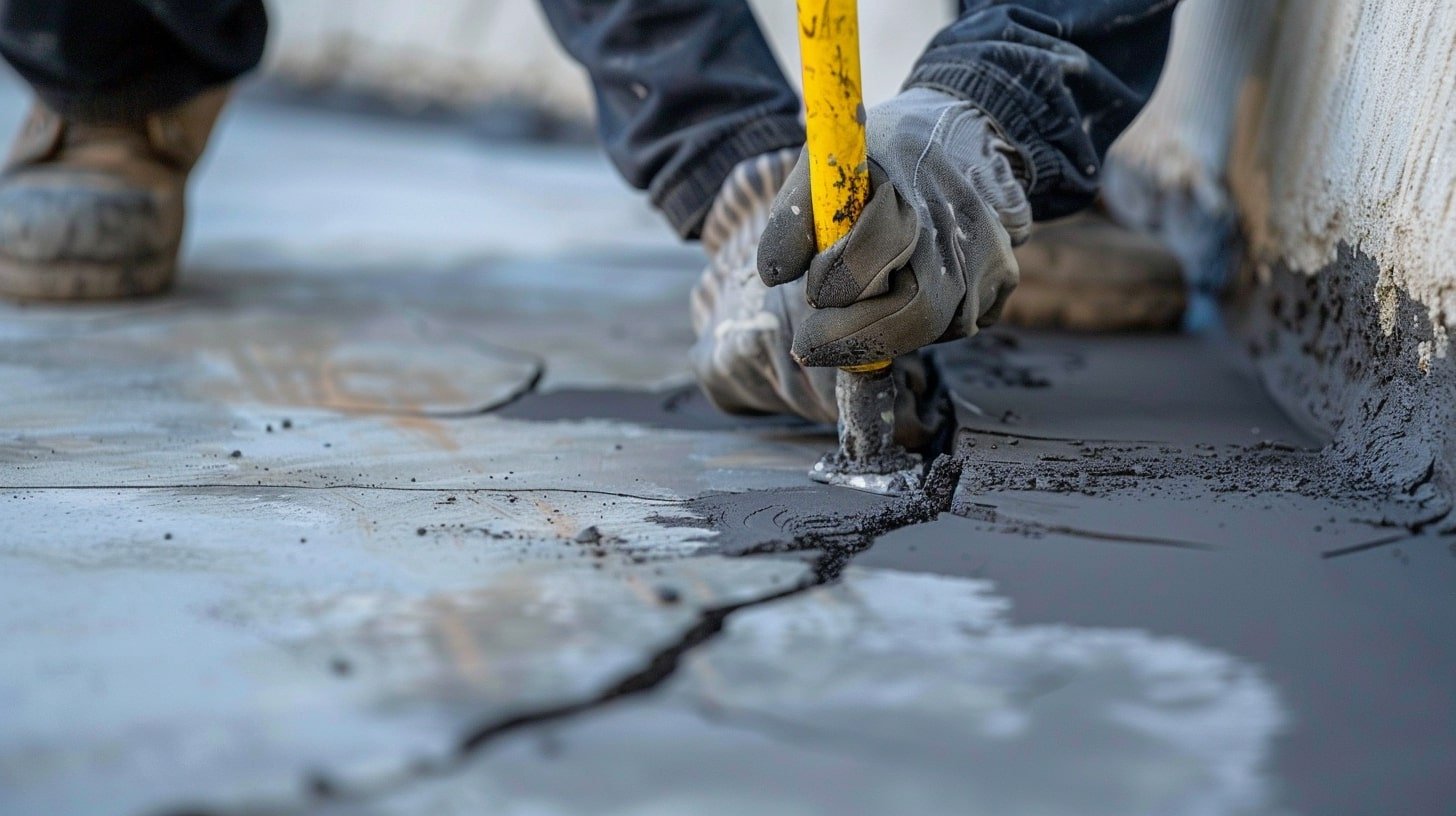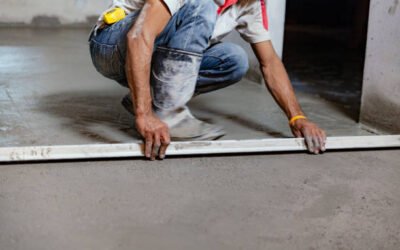As a property manager, the integrity of your pavement is a direct reflection of your commitment to maintenance and value preservation. Crack sealing is not just a form of repair—it’s an essential proactive measure that can vastly extend the life of your pavement surfaces. In this definitive guide, we’ll delve into the cost-effective and efficient techniques that property managers can implement to ensure their pavement remains in top condition, minimizing liability and enhancing curb appeal.
Table of Contents
Whether you’re new to property management or looking to refine your maintenance strategies, this article is tailored to equip you with practical knowledge. Keeping an eye on the asphalt and acting swiftly can save you a great deal of money and hassle in the long run. So let’s crack on and explore these indispensable techniques for maintaining and enhancing your property’s pavement.
Understanding the Basics of Crack Sealing
What is Crack Sealing?
Crack sealing is a preventative maintenance procedure aimed at keeping water and debris out of pavement cracks, thus preventing further deterioration. By carefully applying a hot sealant into cracks, you create a flexible barrier able to expand and contract with the pavement’s movement, ensuring the surface stays intact through various weather conditions. The role of crack sealing in pavement preservation can’t be overstated—without it, minor cracks can quickly become major problems.
How Crack Sealing Protects Your Property
Committing to a routine crack sealing program is a smart investment in your property’s longevity. The benefits are multifaceted: it prevents water infiltration which is the primary cause of pavement weakening and potholes; by sealing cracks promptly, you avoid more costly repairs down the line. Plus, well-maintained pavement offers a safe surface for vehicles and pedestrians alike, mitigating the risk of accidents and potentially costly liability claims.
Fun Fact: Did you know that water is often referred to as the “universal solvent”? In pavement, it’s the main agent of destruction, capable of turning small fissures into cavernous cracks if left unchecked.
Effective crack sealing not only prolongs the pavement life but also sustains property value. For any property manager, the sight of well-kept grounds and facilities is a mark of professionalism and care. It’s a subtle yet powerful signal to tenants and visitors that management is diligent and attentive to the property’s condition.
Assessing Your Property’s Needs
Identifying Types of Cracks
Cracks come in various shapes and sizes, each with its implications for repair. Linear cracks, spiderweb cracks, and alligator cracks are amongst the most common. Recognizing and understanding the characteristics of these common offenders can guide your approach to sealing.
For instance, linear cracks, running parallel or perpendicular to the pavement’s centerline, can often be addressed individually. But when it comes to alligator cracking, which resembles the skin of its namesake reptile, the underlying issues are often more serious, potentially signalling structural failure best left to professionals.
| Type of Crack | Characteristics | Implications for Repair | Recommended Repair Method |
|---|---|---|---|
| Linear Cracks | Straight or zig-zag lines that don’t intersect with other cracks | Indicates structural failure or overloading | Use hot or cold-applied sealants; consider overlay if due to structural issues |
| Alligator Cracks | Interconnected cracks forming a pattern that resembles alligator skin | Surface fatigue, structural inadequacies, or poor drainage | Full-depth repair or asphalt overlay recommended; sealing is only a temporary fix |
| Block Cracks | Large rectangular or square patterns of cracks | Shrinkage of the asphalt layer or underlying surface movement | Sealing to prevent water infiltration; may require more substantial repairs if due to underlying issues |
| Edge Cracks | Cracks that form within 1-2 feet of the pavement edge, parallel to the edge | Lack of support at the pavement edge or poor drainage | Add support to edges, improve drainage, and seal cracks |
| Joint Reflection Cracks | Cracks that occur above and are aligned with joints in concrete or asphalt pavements beneath the current surface | Movement of the underlying pavement layers | Sealant to prevent water infiltration; use overlays or milling and filling for more severe cases |
| Slippage Cracks | Crescent-shaped cracks or tears in the surface layer where the top layer has slipped over the lower layer | Poor bonding between surface layers or between layers and a smooth base | Remove and replace the affected area; ensure proper bonding and compaction |
| Transverse Cracks | Single cracks perpendicular to the pavement’s centerline or laydown direction | Temperature fluctuations causing contraction and expansion of the asphalt | Seal to prevent water infiltration; may require overlay if due to structural issues |
| Longitudinal Cracks | Cracks that run parallel to the pavement’s centerline or laydown direction | Poor lane joint construction, pavement fatigue, or subbase failure | Seal to prevent water infiltration; consider milling and filling or overlays for more severe cases |
| Spiderweb Cracks | Fine, surface-level cracks resembling a spiderweb or crazing | Surface layer drying and shrinkage, or inferior asphalt mix | Surface seal treatment or slurry seal for minor cases; overlay for more severe damage |
When to Seal Cracks: Timing is Everything
The optimal time for crack sealing is dependent on weather and the pavement’s condition. Generally, late spring and fall offer the most favourable conditions—cool nights and warm days create an ideal range for sealants to adhere and cure properly. Moreover, the dry weather in these seasons provides a better environment for the sealant to set.
Proper timing also involves acting quickly once a crack is noticed. Delaying crack sealing can lead to water-induced damage, requiring more extensive and expensive repairs. It’s not just about filling a void in the pavement; it’s about pre-empting the cycle of wear and tear that can take a toll on your budget and your property’s overall aesthetics.
Selecting the Right Materials
Comparison of Crack Sealing Materials
Choosing the right sealant is paramount for effective crack sealing. The market offers a variety of materials, including hot-applied sealants, cold-applied sealants, and acrylic-based solutions. Each has its particular set of properties that may be more or less suitable depending on the crack type, pavement condition, and climate.
Hot-applied sealants, for instance, are favoured for their durability and adherence properties but require specialized equipment for application. Cold-applied alternatives can be more user-friendly and better for quick touch-ups or in cooler temperatures where hot-applied sealant won’t set as effectively.
| Sealant Type | Material Composition | Durability | Application Temp. | Curing Time | Flexibility | Cost | Recommended Use |
|---|---|---|---|---|---|---|---|
| Hot-Applied Rubberized Asphalt | Rubberized bitumen | High | High (375-400°F) | 24-48 hours | Very flexible | Moderate | Highways, major roads |
| Cold-Applied Asphalt Emulsion | Asphalt emulsion, fibres, fillers | Moderate | Ambient | Several hours to days | Moderately flexible | Lower | Residential streets, small repairs |
| Self-Leveling Silicone | Silicone-based | Very High | Ambient | 1-2 hours | Extremely flexible | Higher | Joints in concrete pavements, airports |
| Polyurethane Foam | Polyurethane resin | High | Ambient to Low | 30 minutes to hours | Flexible | Moderate to High | Wide cracks, expansion joints |
| Acrylic | Acrylic polymer | Moderate | Ambient | Hours to days | Less flexible | Lower | Decorative surfaces, walkways |
| Epoxy Resin | Epoxy resin | Very High | Low to Ambient | 4-24 hours | Rigid | High | Structural repairs, heavy-duty surfaces |
Cost, ease of application, and life expectancy of the product are all critical factors to consider when selecting a sealant. It’s not a one-size-fits-all scenario, and property managers must weigh the pros and cons to find the best fit for their particular situation.
Eco-Friendly Options for Sustainable Properties
In an era where sustainability is becoming increasingly important, eco-friendly crack sealing options are worth considering. Green sealants often consist of recycled or bio-based components and aim to reduce harmful emissions during the application process.
While they might come at a premium, the long-term benefits of using environmentally responsible products can be significant—not just for your conscience but also for your property’s reputation amongst an ever-growing eco-conscious public.
DIY Vs. Professional Crack Sealing
When to Call in the Experts
There’s a fine line between a DIY job and one that requires professional intervention. Key indicators that it’s time to call in the experts include the scale of the repair job, the complexity of the cracks, and your own resource limitations. Large-scale projects, or cracks that indicate underlying structural issues, often warrant a professional’s expertise.
Property managers should consider not only the immediate cost but also the potential long-term savings that professional work can offer. Experts bring with them the right equipment, materials, and most importantly, experience, which can mean a more durable and effective repair.
Pros and Cons of DIY Crack Sealing
DIY crack sealing has its place in property maintenance, appealing for its potential cost savings and immediate action. However, without the proper tools and materials, a novice job can lead to subpar results that may not withstand the test of time or weather.
Consider the pros of cost-effectiveness and the satisfaction of handling issues in-house, against the cons of potential long-term costs and safety risks. Executing a DIY job requires strict compliance with safety protocols, as the materials and equipment involved can be hazardous.
Cost-Effective Crack Sealing Strategies
Maximizing Your Maintenance Budget
Staying ahead of the game with preventative maintenance can be far more cost-effective than deferring upkeep until it’s too late. Implementing regular inspections, timely interventions, and using the correct materials can extend the life of your pavement and minimize future expenditures.
Buying materials in bulk, investing in quality equipment for repeated use, and training in-house staff for minor repairs are all strategic ways to maximize your maintenance budget.
Long-term Planning for Property Managers
A methodical approach to maintenance scheduling is better than ad-hoc repairs. Structured long-term planning that includes regular monitoring of the pavements, budget allocation for routine repairs, and intervals for more comprehensive works is crucial.
Being proactive instead of reactive will sustain the pavement’s quality over time, ultimately reflecting well on the property manager’s competency and foresight in maintaining the property.
Addressing Common Challenges in Crack Sealing
Handling Large or Complex Crack Areas
When tackling larger or more complex areas, the key is to assess the extent and depth of damage properly. Certain large or intricate patterns may indicate severe underlying issues such as substrate instability or improper installation. In such cases, repairing the symptom (the crack) without addressing the underlying cause can lead to recurrence and wasted resources.
For significant or complex cracking, consider a full-depth patch or a complete overlay. In certain instances, employing a geotextile fabric between the old and new pavement can bridge the cracks and prevent them from reflecting through to the surface.
Weather and Temperature Considerations
Environmental factors greatly influence the effectiveness of crack sealing. Ideal conditions are dry and moderate but vary depending on the material used. Cold-pour sealants offer more flexibility in cooler conditions, while hot-pour sealants need the warmth to ensure proper melting and adhesion.
Paying close attention to the weather forecast is vital, as rain can wash away uncured sealant and extreme temperatures can impede proper curing. Flexibility in scheduling based on expected weather conditions is a must for property managers.
Measuring the Success of Crack Sealing
Key Performance Indicators (KPIs) for Property Managers
Gauging the success of crack sealing efforts comes down to several KPIs. These include the longevity of the sealed cracks, the prevention of new cracks, and general pavement condition improvement. It’s also important to track repairs’ costs over time, as successful crack sealing should lead to lower maintenance expenses.
By keeping a record of interventions and outcomes, property managers can identify trends, anticipate needs, and plan accordingly. Such data-driven decision-making is an essential aspect of modern property management.
Conclusion
Pavement maintenance, particularly crack sealing, is a vital aspect of property management that should never be overlooked. Proactive and effective sealing not only preserves the longevity and aesthetics of pavement but also protects a property manager’s investment. By understanding the why and how of crack sealing, incorporating the practice into a regular maintenance routine, and strategizing on the best approach—be it DIY or professional engagement—property managers can ensure their pavement remains in optimal condition, thereby reflecting positively on their management capabilities.
Maintaining a property is a continual journey, and while challenges may arise, the strategies outlined here aim to provide the knowledge and tools necessary to navigate the path of crack sealing with confidence and efficiency. To the diligent property manager, every sealed crack is a step towards a more robust, appealing, and safe property.
FAQs about Crack Sealing Techniques
What is the difference between crack sealing and crack filling?
Crack sealing involves the strategic placement of a sealant material in and over a working crack to prevent water and debris from entering and causing further damage. Crack filling, however, is the practice of placing a filler into non-working cracks to reduce pavement deterioration, without the expectation of significant movement or expansion of the crack.
How long does the sealant need to cure before the pavement can be used again?
The curing time for sealant can vary based on the type of material used, the temperature, and environmental conditions. Most hot-applied sealants require a few hours to set properly before traffic can resume. Always refer to the manufacturer’s specifications for precise curing times.
Can crack sealing be done in any weather condition?
No, extreme weather conditions such as rain, snow, or very high or low temperatures can affect the success of crack sealing. Ideal conditions are typically dry with moderate temperatures. Weather forecasts should be checked in advance to plan accordingly.
How often should crack sealing be performed on a property?
Regular inspections are recommended to determine the need for crack sealing. Typically, sealing should be considered whenever notable cracks are observed, with many property managers opting for a yearly maintenance schedule.
What are the signs that a previously sealed crack needs attention?
Indicators that a previously sealed crack may require further attention include the reemergence of the crack through the sealant, visible wear of the sealant, or evidence of water intrusion. Such signs suggest it’s time to assess and potentially reseal the area.







